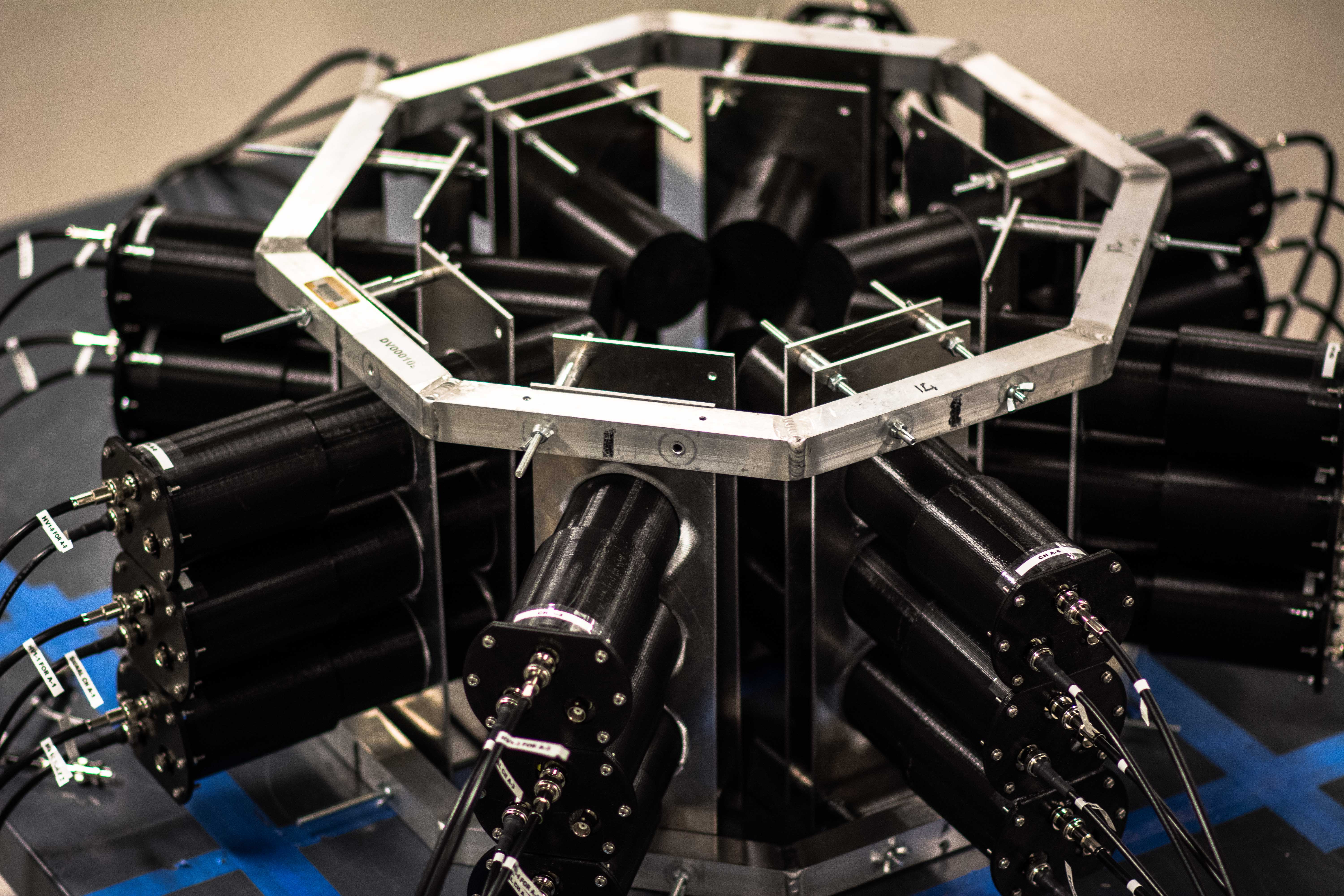Research Focus Areas: 3
Ph.D. students: J. Lamproe, F. Darby
Past Ph.D. Students: M. Hua, T. Shin
Current Staff and Collaborators: O.V. Pakari, J.D. Hutchinson (LANL), G. McKenzie (LANL), R.A. Weldon (LANL), I. Pázsit (Chalmers Univ. of Technology, Sweden)
Past Collaborators: A. Di Fulvio (UIUC), D.L. Chichester (INL), N. Zaitseva (LLNL), H. Menlove (LANL), R. MacElroy (ORNL)
Neutron multiplicity counting is a well-established measurement tool for characterizing and verifying fissile material. It has been used for several decades both in passive systems for high-spontaneous fission rate isotopes, as well as in the form of active systems employing an interrogating source. The technique is applied to the assay of materials such as fresh and spent nuclear fuel, scrap nuclear metal, and MOX.
The development of novel detection systems for nuclear safeguards and materials control and accountability is integral for the future of safe and reliable nuclear energy. Neutron multiplicity counting using capture-based thermal neutron detectors (i.e. He-3 gas counters) are commonly used to implement non-destructive assay (NDA) of special nuclear material. This research focuses on the use of scatter-based fast neutron detectors (i.e. organic scintillators) to improve on the speed and accuracy of NDA of special nuclear material, while also extending the current capabilities as the fast neutron detectors are sensitive to the energy and angle of emitted neutrons in addition to the multiplicity. Recent work has shown that there exist correlated signatures in the neutron energy, angle, and multiplicity of fissile material. These unique correlated signatures will be used to characterize properties pertinent to special nuclear material such as the fissile mass and multiplication. The Fast-Neutron Multiplicity Counting system developed at UM uses multiple organic scintillation detectors, including the new pulse-shape-discrimination-capable plastic scintillators, and digital acquisition with on-the-fly data processing. This work will be performed in collaboration with our national laboratory partners at LLNL (N. Zaitseva), ORNL (R. MacElroy), and LANL (H. Menlove), and our international partner at Chalmers University of Technology (I. Pázsit)
Presentations:
Related Publications:
- M.Y. Hua, J.D. Hutchinson, G.E. McKenzie, S.D. Clarke, S.A. Pozzi, “On the Feynman-alpha Method for Reflected Fissile Assemblies,” Annals of Nuclear Energy, vol. 155, 108082, 2021. https://doi.org/10.1016/j.anucene.2020.108082
- N. A. Kleedtke, M. Y. Hua, and S. A. Pozzi, “Genetic algorithm optimization of tin-copper graded shielding for improved plutonium safeguards measurements,” Nuclear Instruments and Methods in Physics Research Section A, vol. 988, 164877, 2021. https://doi.org/10.1016/j.nima.2020.164877
- M.Y. Hua, F.B. Darby, J.D. Hutchinson, G.E. McKenzie, S.D. Clarke, S.A. Pozzi, “Validation of the Two-Region Rossi-alpha Model for Reflected Assemblies,” Nuclear Instruments and Methods in Physics Research Section A, vol. 981, 164535, 2020. https://doi.org/10.1016/j.nima.2020.164535
- T.H. Shin, M.Y. Hua, M.J. Marcath, D.L. Chichester, I. Pázsit, A. Di Fulvio, S.D. Clarke, S.A. Pozzi,“Neutron Multiplicity Counting Moments for Fissile Mass Estimation in Scatter-Based Neutron Detection Systems” Nuclear Science & Engineering, vol. 188, pgs. 246-269, August 18th, 2017
- A. Di Fulvio, T.H. Shin, T. Jordan, C. Sosa, M.L. Ruch, S.D. Clarke, D.L Chichester, S.A. Pozzi, “Passive Assay of Plutonium Metal Plates using a Fast-Neutron Multiplicity Counter”. Nuclear Instruments & Methods in Physics Research A, vol. 855, pgs. 92-101, February 27, 2017

